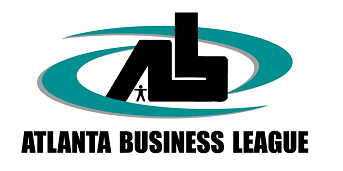Understanding ISO 31000 and its Benefits

In the domain of risk management, ISO 31000 has become an important framework of concern for organisations operating under uncertainties. This international standard provides procedures for the entire process of risk management, from risk identification through risk assessment to risk control. The application of ISO 31000 principles makes it possible for organisations to operate better by having the right information on all matters, improving their resilience and coping with the tasks at hand. Its versatility across industry sectors has made it a basic standard for instituting global risk management practices. This article attempts to explain the basics of ISO 31000, its usefulness and how it helps organisations to carry out risk management while still adhering to international standards such as the CSA STAR certification.
What is ISO 31000?
ISO 31000 is a recognised international standard related to risk management, which helps formulate a risk management framework and process. The standard facilitates organisations to develop a systematic process of risk identification and consideration of the risk treatment, which in turn makes it easier to manage the risk’s adverse effects. Whether an organisation is dealing with financial risks, operational risks or whichever uncertainties, ISO 31000 provides a systematic methodology to work under these circumstances.
It concentrates on risk identification, risk appraisal, risk treatment and active monitoring as a way of making sure that risks are managed in advance. This, in turn, helps business entities to foresee issues and then implement measures to eliminate, reduce or transfer risks. This dynamic move is instrumental in building a healthy future, efficiency of operations as well as making business decisions.
The core principles of ISO 31000
ISO 31000 is based on the principles that guide organisations in managing risk effectively. The principles here are about the incorporation of risk management in organisational processes, the application of a structured approach to risk assessment and the tailoring of strategies to a particular organisation’s context. An organisation’s risk management should not be isolated but rather embedded everywhere in the organisation, from strategic planning to daily operations.
The core idea of ISO 31000 is that risk management should be dynamic, enabling an organisation to adjust to changing circumstances and potential new threats. It also highlights continuous improvement, calling for organisations to regularly review and upgrade their risk management practices in case of unravelling previous experiences and new challenges. It helps risk management remain relevant and impactful as the organisation continues to grow and build resilience and long-term success.
How ISO 31000 benefits organisations
The adoption of ISO 31000 provides a range of critical benefits, which make it a necessary framework for risk control in all organisations. It can also improve decision-making, which is one major advantage. With ISO 31000 in place, organisations can assess risks systematically and decide on certain trade-offs that limit their risk presence while taking advantage of the intended risk-taking opportunities.
Additionally, ISO 31000 contributes to efficient use of resources. It enables organizations to identify the most critical areas where resources should be concentrated to mitigate the most urgent risks, thereby directing investments where they matter the most. Additionally, the standard increases organisational resilience by requiring that proactive risk management and contingency planning take place. Adaptability and the ability to respond to unexpected events that impose minimal disruption make ISO 31000 a vital tool for industries with volatile and uncertain environments.
The role of ISO 31000 in compliance with CSA STAR
The CSA STAR certification (Cloud Security Alliance Security, Trust & Assurance Registry) is among the most important benchmarks for cloud computing providers, as it assesses and certifies their security views in terms of security, privacy and risk management standards. Although ISO 31000 is not relevant to CSA STAR, the principles of risk management do assist, to an extent, the objectives of the certification.
For organizations seeking the CSA STAR certification, ISO 31000 assists in the assessment of possible cloud security and privacy compliance risks. Moreover, with the systematic risk assessment approach of ISO 31000, organizations can remediate weaknesses and meet the higher requirements of CSA STAR. This holds an important place for organizations moving towards cloud technologies, as with this they will be able to assess risks and be certain to all stakeholders that they are following appropriate international standards with regard to data security and legal requirements.
How ISO 31000 aligns with corporate governance
Corporate governance is the set of rules governing how the organization operates. As an overarching standard for risk management, ISO 31000 is central to corporate governance by ensuring that risk management practices are right within the governance structure of the organization. It assists boards of directors, senior executives, and other stakeholders in supervising risk management activities and ensures that risk considerations are incorporated in decision making.
Conformance to ISO 31000 facilitates transparency and accountability in organisation’s risk management practices. Such alignment guarantees that decision makers have the right information to make informed choices, thereby solidifying organizational governance framework. In addition, ISO 31000 advocates integration of different levels of the organization in risk management, particularly allowing relevant risk-related information to circulate freely within the hierarchy and avoiding situations where stakeholders are unaware of the risks that the organization is exposed to.
Continuous improvement and ISO 31000
One strength of ISO 31000 is that it emphasises continuous improvement of risk management. It acknowledged that the risk is a dynamic creature that evolves with time; that as one threat dims, another will pop up and vice versa. This is why ISO 31000 advocates for regular reviews and adjustments of risk management processes, allowing organisations to be responsive to a changing environment.
The feedback loop included in the standard allows businesses to revisit their risk strategies in light of previous assessments and changing conditions. It is easier to adapt to changes in market trends, technological developments, or regulatory changes. In the end, ISO 31000 allows organisations to continue to be resilient and agile, with a competitive edge that can react quickly to emerging risks. For long-term success in fast-paced industries, this adaptability is vital.
Conclusion
ISO 31000 is a set of guidelines that emphasises setting policies that help organisations develop effective risk management techniques, which therefore help to prevent unnecessary losses. It enables firms’ stockholders to trade off risks and create more value when the firm is exposed to more value-creating opportunities. Similarly, its adoption of international standards such as CSA STAR highlights its importance in the areas where strict risk compliance is required, such as cloud computing. Therefore, it establishes a more disciplined approach to understanding the key risks and opportunities and how they consistently bear in mind said risks as they govern their organisation. Such measures would ultimately lead to the betterment of the overall business, meaning that the businesses would operate more efficiently in a world full of risks.



